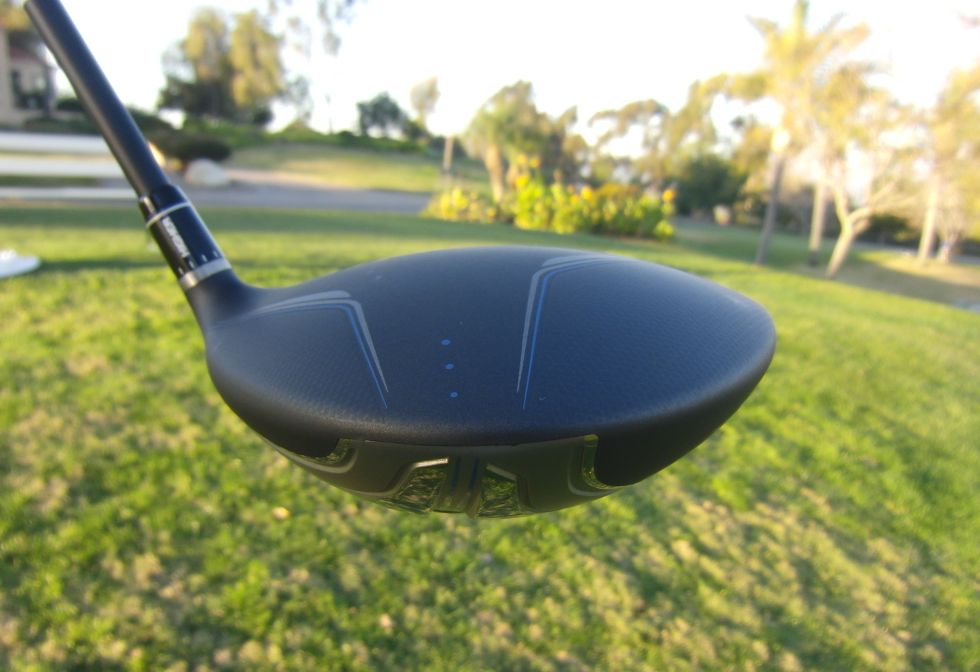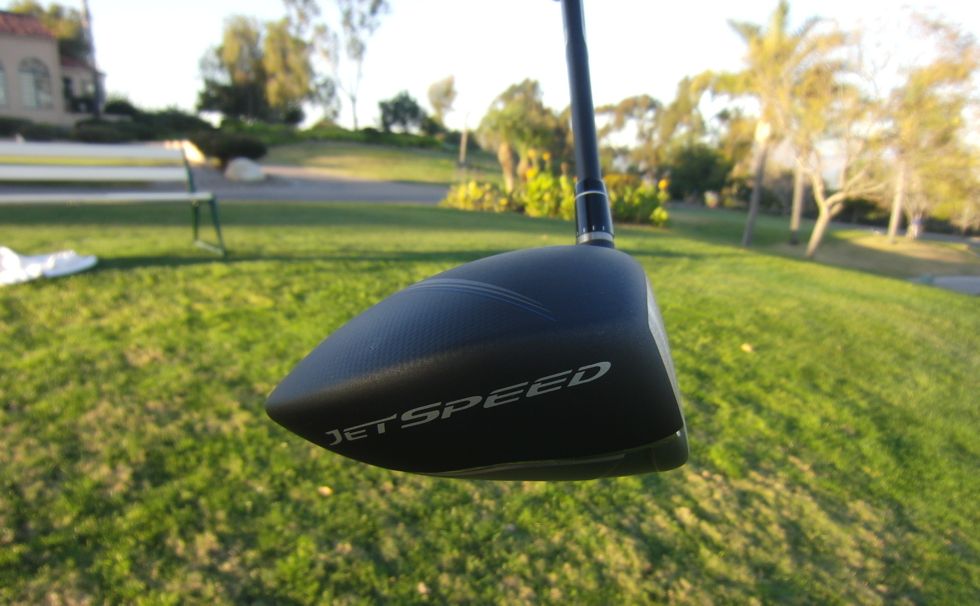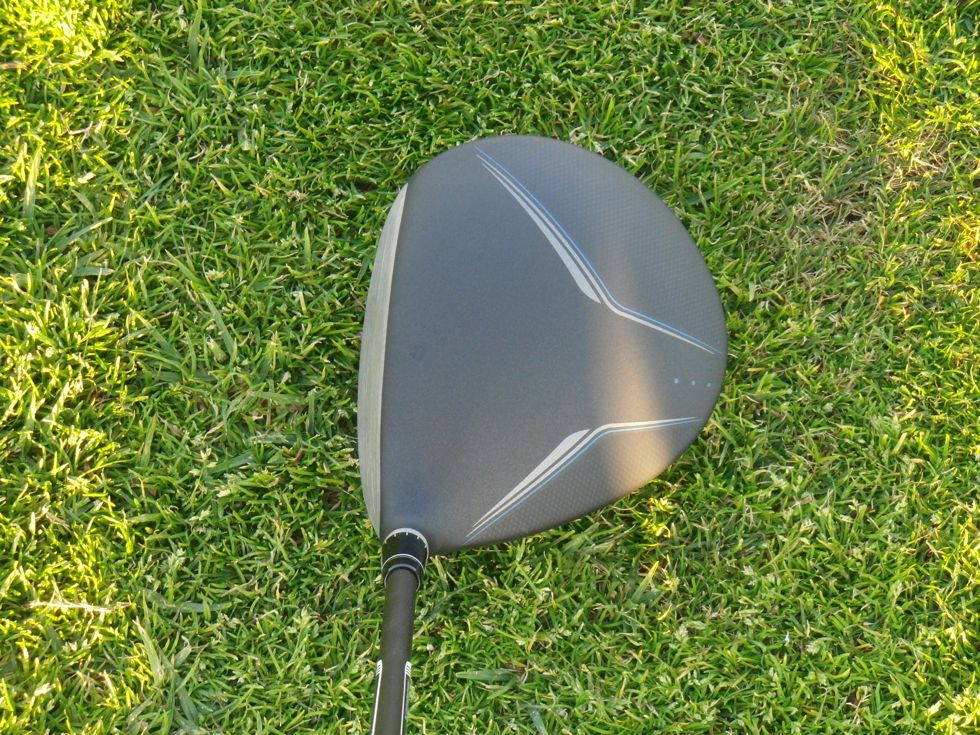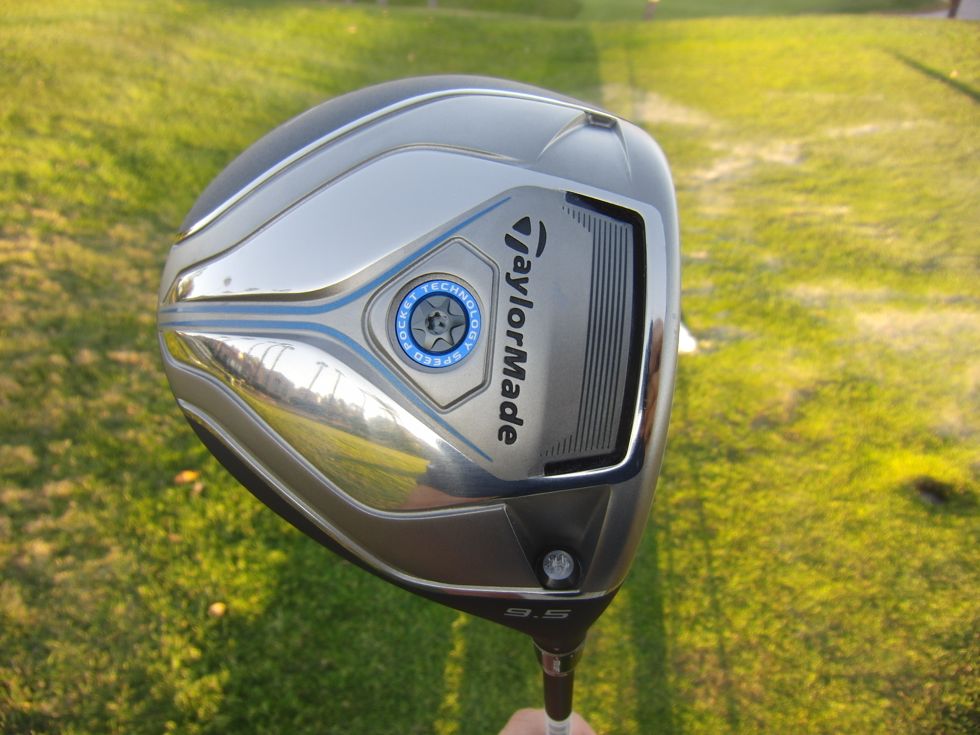 In the past couple of years TaylorMade launched one of the most aggressive marketing campaigns the golf industry has ever seen around a unique club named Rocketballz. The Rocketballz line was a very popular line of drivers and fairway woods. Hoping to continue on the excitement TaylorMade released Rocketballz-ier line called RBZ Stage 2. The Stage 2 line was not nearly as popular as the original, and so once again TaylorMade decided to change it up with the JetSpeed line of woods.
In the past couple of years TaylorMade launched one of the most aggressive marketing campaigns the golf industry has ever seen around a unique club named Rocketballz. The Rocketballz line was a very popular line of drivers and fairway woods. Hoping to continue on the excitement TaylorMade released Rocketballz-ier line called RBZ Stage 2. The Stage 2 line was not nearly as popular as the original, and so once again TaylorMade decided to change it up with the JetSpeed line of woods.
The audience for the JetSpeed is average golfers for whom the excitement of the movable weight technology in the SLDR line does not tickle their fancy. I was the reviewer for the SLDR driver and I was very excited about the distance gains from the SLDR driver but I was unable to hit it straight. So when the opportunity to hit the JetSpeed came along I jumped at the opportunity.
Let’s take a look at how the JetSpeed stacks up.
Technology
In creating the name for the JetSpeed driver TaylorMade considered the main strength of the club: speed. Not only clubhead speed, but ball speed as well. Essentially they boiled it down to velocity. They describe the feeling of the club as the pedal all the way down to the metal or Full Military Power, whatever that means.
The main culprit behind all this power is the Speed Pocket and the JetSpeed is the first TaylorMade driver in history to incorporate this technology. The Speed pocket is engineered to lower the spin on the driver. Too much spin can be a distance killer, by lowering the spin the driver can be built to provide improved performance particularly when the driver is hit low on the face which is the most common location for a miss according to TaylorMade. With most drivers low contact generates too much spin making the ball flight too high and land short.
The Speed Pocket is not new to the TaylorMade lineup. You have seen it before in the Rocketballz fairway woods. The Speed Pocket on those clubs was done to increase the distance and most people will attest that the RBZ and RBZ Stage 2 fairway woods were very long. TaylorMade has improved the Speed Pocket by filling it with polymer in order to prevent debris from getting into the pocket and hurting the performance of the driver. The polymer is designed to be flexible to allow for the driver to flex freely and perform as intended but also prevent vibration as well.
As with all the latest TaylorMade drivers the JetSpeed is integrated with the adjustable hosel, Loft-Sleeve as described by TaylorMade allows you to choose from one of twelve different positions that gives you plus or minus 1.5 degrees of loft.
Esthetics
The Rocketballz line from TaylorMade was such a strong statement with regards to esthetics that the JetSpeed appears quite calm in comparison. Gone is the trademark “ghosting” that was done and it has been replaced by a calmer grey and blue tone that was set by the earlier release on the SLDR driver.
I would describe the new design as industrial. The blacks are done without glare and have a matte finish and the grey and blue are framed by cross-hatch designs similar to what you would find on tablets and computers these days. This driver will not stand out on the range as the Rocketballz line did.
The top of the clubhead has a matte black color which is framed by grey and blue funnel to the back of the clubhead. This is done according the TaylorMade to help the golfer with alignment of the driver. On the other side of the funnel is the same black color but a cross-hatch design done to help visually separate that portion of the driver. For affect the end of the funnel has three blue dots, not sure of the significance but they are in tune with the color sequencing. The colors are very appealing. I like the matte finish and feel it does great with glare on bright sunny days, and is a very calming color scheme along with the blue and light grey.
The bottom of the driver is done mostly in a workman like light grey. I would describe it as soft metallic grey. In the center of the bottom of the driver is a screw which says “Speed Pocket Technology” in white lettering against a blue background, but it does not have much functionality other than for looks. The screw begins a very tight funnel which goes to the back of the driver. The funnel is framed with the blue that is found throughout the driver. At the top of the funnel near the face of the club is the speed pocket which is shaped like a bucket going from one end of the club to the other. The speed pocket itself is barely noticeable when you glance at the club it is only after some careful inspection that you will find it.
The toe of the club has a giant JetSpeed written on it in white so as anyone nearby to notice the name. The heel of the club has the screw for the adjustable loft sleeve and the loft in white printed on it. The hosel has the adjustable configurations in white against a black ferrel. The face of the golf club is done in matte grey and has a few scoring lines on it. The face is wide, but not very deep, almost the complete reverse of the SLDR driver TaylorMade recently released.
The shaft is done in the same color scheme as the rest of the club with different amounts of grey, black, and blue with white lettering. The grip is a standard tour velvet grip. The headcover could easily be confused with the SLDR headcover as they are almost identical.
Playability and Feel
The first thing I noticed about this driver is that it is one of the lightest drivers I have every used. Everything was designed for the driver to be light and fast. When first hitting this club I liked the feel of it. I struggled when taking the SLDR for a test drive; this driver appeared to be better geared toward a golfer like me. The stock shaft that is given with the club is very long, probably an inch or so longer than I would prefer. So initially I struggled a little to find fairways. Because of the adjustable hosel I switched out the shaft for a shorter variety and immediately started hitting it well.
I would say when perfectly struck the JetSpeed is not as long as the SLDR. With mishits though, this driver can keep up nicely and in many cases was longer than the SLDR. I would rate the JetSpeed as much more forgiving than the SLDR or many of the other drivers I have reviewed in the past. The one downside with the driver for me was the fact that it was designed to improve shots hit lower on the face. I hit up on the ball and find that I often hit near the top of the face and this on occasion caused me to lose distance with the driver. For this reason I would likely not choose this as my everyday driver. I would recommend this driver to players who like to tee the ball low and golfers who often hit the ball near the bottom of the face. If you like to tee the ball high as I do, you may feel when you mishit the ball higher on the face
The sound of the driver was solid and not offensive at all. I would describe it as muted but with a little pop. Over the last few years TaylorMade has made a number of improvements to sound dynamics improving with each generation. The JetSpeed has benefited from these improvements.
The feel of the driver was really well done. I could easily tell where on the face I hit the ball and really well struck shots felt great. Smooth, I could describe it as hitting a forged iron when hit really well. I doubt anyone will be disappointed with the feel of this driver.
Conclusion
For TaylorMade, replacing the successful Rocketballz line was never going to be easy. The JetSpeed is a very nice attempt at replacing the Rocketballz with a more traditional design but still hold the performance requirements set by the Rocketballz driver. The sleeker matte black, grey, and light blue color scheme is not offensive and will make the traditional golfer much happier. I was a fan of the ghosting that TaylorMade was doing on their drivers, but I do not think that everyone shared my preference.
Having reviewed the Rocketballz Stage 2 driver I would pick the JetSpeed over the Stage 2 driver in a heartbeat. I did hit the Stage 2 well, but this driver is more consistent and has a better feel on well struck shots. Forgiveness is similar but again I would give the edge to the JetSpeed driver. So if you are considering to upgrade from the Rocketballz or Rocketballz Stage 2, or even you are struggling to hit the SLDR driver straight as I was I would highly recommend giving the JetSpeed a try.









It’s one thing to sell a driver with replaceable weights.
It’s another to sell a driver with movable parts. Before I buy one of those, my concern is whether the Speed Pocket movable parts will break/fall off in six months. Any reports on how long the movable parts can be expected to last? Or do I need to buy a new driver every year?
Same question regarding the Loft Sleeve? Can I expect that to break after a while?
I would also find the review more helpful if you had more specs about the driver. While you mention that shaft was too long for you, what was the shaft length to start with? And what did you change to?
While you mention that the loft can be adjusted 1.5° either way, what was the loft to start with?
Finally, what was the cost of this driver compared to the other previous two drivers you mention?
Hi @JERoethal the Speed Pocket is filled with polymer and will likely have no long term problems with falling out. I guess it could be possible but I would be surprised.
The driver I had was 9.5 degree so it could go from 8 to 11 degree. Although I will add that I am awful skeptical of the claims by the club companies when it comes to these adjustable lofts. I cannot say for a certainty that they work. It certainly is the trend now.
The length of the club was 45″ as it is specified on TaylorMade’s website. I found it easier to control at 44″.
Currently the JetSpeed sells for 299 which is less than the SLDR at 399 and the same price as the RBZ Stage 2 when it was released. My comments are that it was better than the Stage 2 and I found it easier to hit straight than the SLDR.
If I were buying a driver today I would be very torn between buying this one and the currently discounted R1. The R1 at 199 is a very good deal. But this driver is a little easier to hit straight. So it would be a tough decision.
@JERoethal, maybe you’re thinking of the SLDR?
My wife received a Jet Speed Driver along with the free #4 fairway wood. She tried it for about a doz rnds and was sorely disappointed! She went back to her 1rst yr Burner. I will say that she loves the #4 wood and gets beautiful hits with it
I know it’s been awhile since the review, but I thought I’d share my thoughts on the TM Jet Speed driver. I bought a demo, 10.5 degree loft, with the standard Matrix stiff shaft. First, it would be nice if they had put some better alignment marks on the grip. For reference, I’ve been playing a Ping G10 @ 10.5 with a stock regular flex shaft. The sound difference is noticeable, not harsh, just different. As for the looks, I neither like, or dislike them. What I do like is that the Jet Speed goes straighter than my Ping, and of course the Jet Speed is adjustable, I have it set @ 10.5. Regarding distance, the TM is a tad longer, but the trajectory is much more penetrating, which means better role out. If I try to hit it higher, like my Ping, it doesn’t seem to go as far, although I’m hitting at the range at night.
Overall, I’m pleased with my newly acquired TM Jet Speed driver, and can’t wait to get to the course. All said and done, I’m glad I bought it.